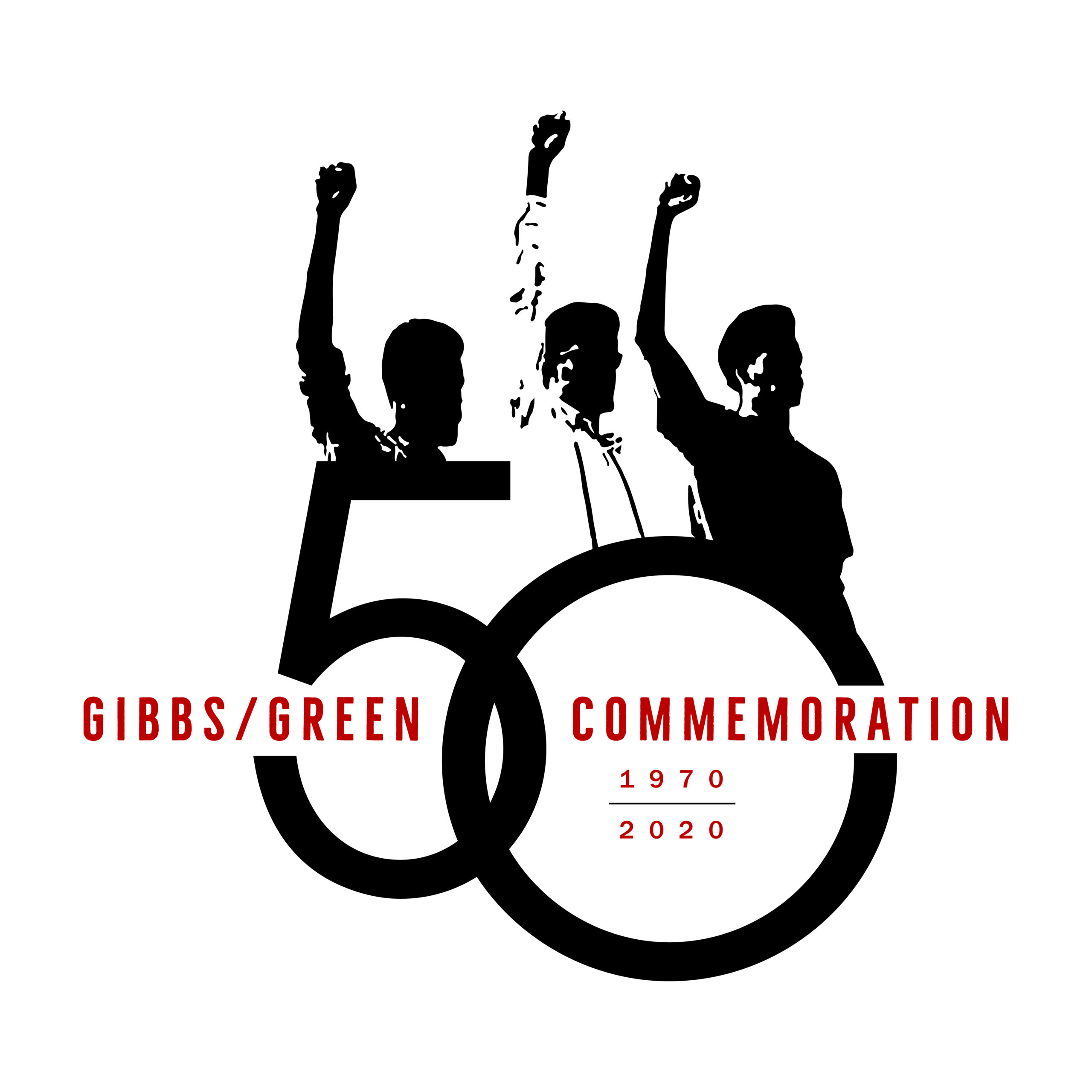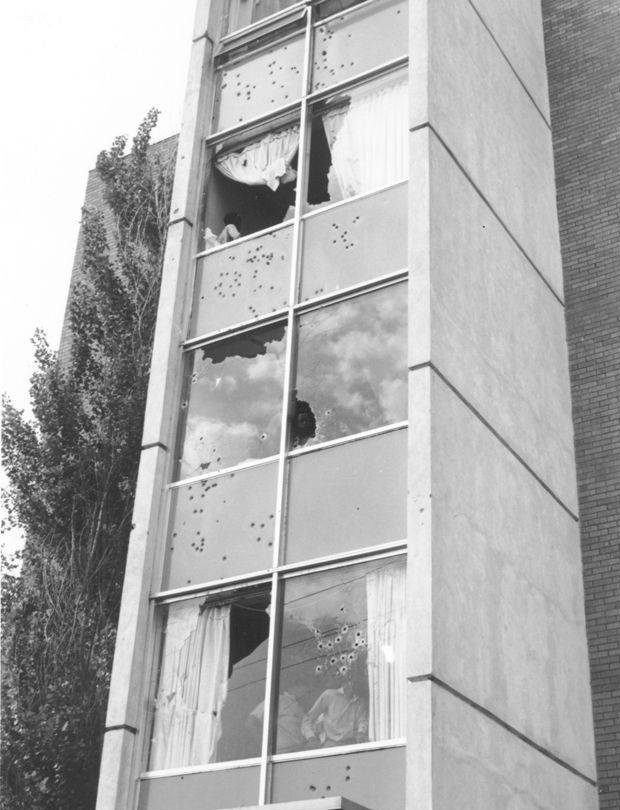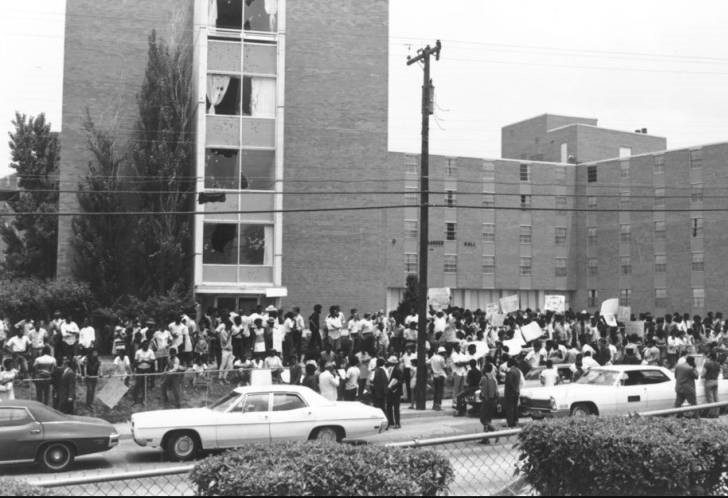 May 14 and 15, 1970
May 14 and 15, 1970
In the months leading up to May 1970, Jackson State students staged a series of protests over their treatment at the hands of white motorists speeding through campus on John R. Lynch Street. Those white drivers were notorious for shouting racial epithets, throwing things from their cars, accelerating towards students crossing the street, and hitting at least one student.
By the late-1960s, the tenor of these protests was more aligned with the burgeoning Black Power Movement than the non-violent, direct action campaigns of the modern civil rights movement. In a more strident fashion than ever before, Jackson State students called for the closing of John R. Lynch Street through the campus, among other demands.
 On the night of May 14, 1970, no students were protesting on campus. A large dump truck had been parked in the middle of John R. Lynch Street, and an unknown person had set it on fire. Before responding to the fire, Jackson city police and Mississippi highway patrolmen responded in full riot gear, approaching midnight. They were accompanied by the “Thompson Tank,” a fully armored personnel carrier purchased by Allen Thompson, the segregationist mayor of Jackson, ahead of what he termed the “invasion” of civil rights activists during Freedom Summer in 1964.
On the night of May 14, 1970, no students were protesting on campus. A large dump truck had been parked in the middle of John R. Lynch Street, and an unknown person had set it on fire. Before responding to the fire, Jackson city police and Mississippi highway patrolmen responded in full riot gear, approaching midnight. They were accompanied by the “Thompson Tank,” a fully armored personnel carrier purchased by Allen Thompson, the segregationist mayor of Jackson, ahead of what he termed the “invasion” of civil rights activists during Freedom Summer in 1964.
The police and highway patrol turned on Alexander Hall, a women’s dormitory. They later claimed that a sniper had fired on them from the 4th floor, a claim fully debunked. Eyewitnesses have said that a student threw a bottle at the police, and, when it broke at their feet, they opened fire, spraying nearly 400 rounds of bullets and buckshot over 28 seconds in every direction.
When the firing ceased, two young men lay dead, Phillip Gibbs, a Junior political science major, who was married with two children, and James Green, a Senior at nearby Jim Hill High School, who was walking home from work on the opposite side of the street. Twelve people were shot by the police and survived, while dozens more were injured by the exploding glass and brick. Hundreds of witnesses bear the psychological scars of that night, which spilled into the early morning of May 15, 1970
Black-and-white photograph showing damage to Alexander Hall, a building on the campus of Jackson
State College. Alexander Hall was the location of the May 15, 1970, shooting of student protesters .
Property of Jackson State University
No one was ever charged for the murders of Phillip Gibbs and James Green. The families of the victims and some of the survivors sued the City of Jackson and the State of Mississippi with the help of civil rights attorney Constance Slaughter-Harvey. During the 10-year court battle, they lost their civil suit, which reached all the way to the United States Supreme Court.
John R. Lynch Street was closed permanently in the aftermath of the shootings, and Jackson State shut down for the remainder of the semester. The Class of 1970 did not get to have a Commencement. Instead, their diplomas were sent to them in the mail.
Tragedy and Triumph: The Lives of the Gibbs-Green Survivors examines the stories of some of the men and women who lived through the May 1970 tragedy at Jackson State.
 Skip to main content
Skip to main content

